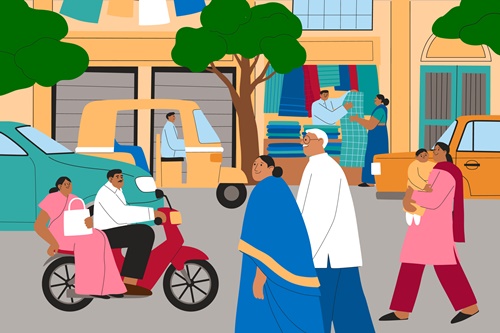Major security incidents, while devastating in their immediate impact, also cast long shadows over the daily lives of urban dwellers, fundamentally altering their routines, perceptions, and critically, their consumer behavior. The ripple effect can be profound, shaping everything from where people shop to how they choose to commute. Understanding these shifts is not just an academic exercise; it offers crucial lessons for businesses and urban planners navigating an increasingly complex world. The 2011 Delhi High Court blast serves as a stark reminder of how a single event can trigger widespread and lasting urban consumer behavior change.
The immediate aftermath of such an event is often characterized by a sharp decline in public activity. Fear becomes the dominant emotion, leading to reduced footfall in public spaces, markets, and entertainment venues. Consumers become hyper-aware of their surroundings, leading to a palpable shift in discretionary spending after attack. Non-essential purchases are deferred, and a siege mentality can sometimes lead to an initial surge in essential goods as people stock up, fearing further disruption.
Beyond the initial shock, more sustained security incident consumer shifts begin to emerge. There’s a noticeable move towards perceived “safer” environments. Open-air markets might see a dip in patronage as consumers gravitate towards enclosed shopping malls with visible security measures. Online shopping also receives a boost, as it offers a perceived sanctuary from external threats. This isn’t merely a temporary blip; these changes often crystallize into new habits, reshaping the impact of security incidents on the economy.
Case Study 1: Retail Foot Traffic in Delhi
Following the 2011 Delhi High Court blast, an immediate and significant drop in retail foot traffic decline after terrorism was observed across central Delhi markets, particularly those known for their open layouts. Traditional bustling areas like Janpath and Sarojini Nagar experienced a stark reduction in visitors for several weeks. Consumers, gripped by apprehension, prioritized safety, opting to stay home or frequent malls where security checks were visibly implemented.
Shopkeepers reported a drastic downturn in sales, especially for non-essential goods. Even as the initial fear subsided, many consumers maintained a heightened sense of caution. This led to a sustained preference for places with controlled access and security protocols. Businesses that adapted by enhancing their visible security, collaborating with local authorities, or even pivoting towards online delivery services were better positioned to recover. Those that didn’t often faced prolonged periods of reduced revenue, highlighting the long-term post-blast consumer trends.
Case Study 2: Public Transportation and Mobility
Another critical area affected by major security incidents is public transportation. The Delhi blast, targeting a public space, instilled a sense of vulnerability among commuters. Many individuals, especially those who previously relied on buses and shared autos, began seeking alternatives that offered greater perceived control or privacy.
There was a noticeable increase in personal vehicle usage where possible, leading to further traffic congestion. For those without personal vehicles, ride-sharing apps, still nascent at the time but growing, saw an uptick as they offered door-to-door service, bypassing potentially crowded and perceived-vulnerable public transport hubs. This shift wasn’t uniform but reflected a change in public safety perception consumer confidence. Even when people returned to public transport, there was often a greater vigilance, an unspoken agreement to monitor bags and surroundings more closely. This incident underscored how quickly citizens can adapt their daily commutes in response to perceived threats, forcing urban planners to reconsider aspects of safety and infrastructure.
The Long-Term Outlook and Lessons Learned
The Delhi blast consumer behavior changes were not fleeting. While the initial panic subsides, the lessons learned by consumers often endure. There’s a lingering demand for enhanced security, greater transparency from authorities, and convenience that bypasses perceived risks. For businesses, this means understanding the evolving landscape of consumer preferences. Investing in robust security measures, both physical and digital (for online platforms), is no longer a luxury but a necessity. Moreover, building community trust and demonstrating a commitment to customer safety can significantly help in rebuilding consumer trust after major incidents.
Urban planners must also integrate security considerations into public space design, creating environments that feel both open and safe. The overarching lesson is clear: security incidents don’t just affect physical infrastructure; they subtly but powerfully reshape the intricate patterns of urban consumer behavior, demanding thoughtful and adaptive responses from all sectors.


